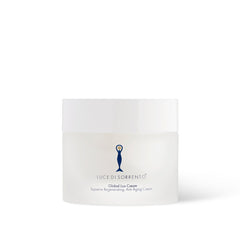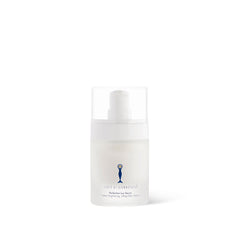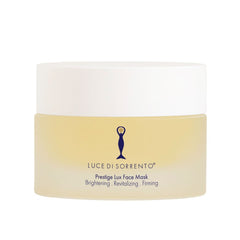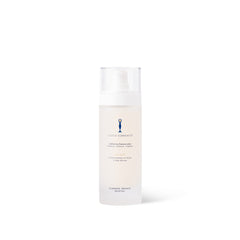

Have you ever looked at your skin and wondered, "What type of skin do I have?" There are so many opinions about skincare products and tips that promise to give you glowing, healthy skin. But before you create a personalized skincare routine, it's important to understand the different skin types and, most importantly, identify your skin type. Read on to find out what skin types are and how you can best take care of them.

What are the skin types?
There are mainly four types of skin :
▪️ Normal : Normal skin is well-balanced, with controlled sebum production and fine pores. It is neither too dry nor too oily and has a healthy, radiant appearance.
▪️ Dry : Dry skin produces little sebum, causing a lack of hydration. It may appear chapped, red, and scaly, with a "tight" feeling.
▪️ Oily : Oily skin produces excess sebum, which can lead to enlarged pores, shine, and blemishes like blackheads and pimples.
▪️ Combination : Combination skin is a combination of dry and oily skin types. The T-zone (forehead, nose, and chin) tends to be oily, while the cheeks are normal to dry.
But let's look at the characteristics of each one in detail.
Skin Types: NORMAL
Normal skin is the most desired skin type as it represents a perfect balance between hydration and sebum production. In fact, people with normal skin have a healthy and glowing complexion.
What does normal skin look like?
▪️ Balanced Hydration : Normal skin is neither too dry nor too oily. The skin barrier is intact and retains moisture effectively.
▪️ Fine Pores : The pores of normal skin are small and barely visible.
▪️ Even tone : Normal skin has a rosy, even tone, without blemishes or discolorations.
▪️ Smooth Texture : Normal skin is smooth and soft to the touch, without cracking or flaking.
▪️ Minimal sensitivity : Normal skin is generally not very sensitive and reactive to cosmetic products.
Advice
Having normal skin doesn't mean you don't need to take care of it to keep it healthy and glowing. Make sure to use gentle cleansing to avoid drying out your skin and use moisturizing cosmetics to keep it supple and protected.
Finally, remember to use sunscreen products with SPF 30 or higher to protect your skin from sun damage andprevent the appearance of sunspots .
Skin Types: DRY
Dry facial skin is a skin type that lacks the natural oils that make up the skin barrier. These oils are essential for retaining moisture in the skin.
This type of facial skin can be caused by several factors and is often a combination of several of them. For example, prolonged exposure to adverse environmental conditions, such as dry air, cold wind or prolonged exposure to the sun without protection, can contribute to dry skin. These environmental factors can be compounded by the incorrect use of cleansers that strip the skin of its natural oils, leaving it without a skin barrier and causing greater and faster water loss.
Aging and menopause, which cause the skin to produce less of its natural oils, can also cause dry skin.
Other determining factors are the lack of essential nutrients such as vitamins and omega-3 fatty acids, the use of certain medications, smoking, environmental pollution and hormonal fluctuations related to pregnancy , menopause or changes in the cycle.
What does dry skin look like?
▪️ Tightness and Cracking : Dry skin can feel tight and cracked, especially after washing.
▪️ Itchy : This skin type can cause itching, which can be aggravated by factors such as heat or stress.
▪️ Flaking : May flake, with small flakes of skin appearing.
▪️ Redness : May appear red and irritated.
▪️ Wrinkles and fine lines : It is more prone to wrinkles and fine lines.
Dry or dehydrated skin?
Dry skin is often confused with dehydrated skin, but they are not the same thing. Dry facial skin is the type of skin that lacks the natural oils that make up the skin barrier and retain moisture in the skin.
Dehydration , on the other hand, is a temporary condition in which the skin is deficient in water, but not necessarily oils.
Advice
To take care of dry facial skin, it is important to start with a proper facial cleansing using only gentle cleansers. It is also important to adopt a hydrating skincare and protect the skin from the sun's rays. It is also necessary to hydrate from the inside by drinking plenty of water and avoid stress and lack of sleep that can worsen dry skin and also lead to dermatitis or eczema.
Skin Types: OILY
Oily skin is a common condition that occurs when the sebaceous glands produce excess sebum, an oily substance that helps keep the skin hydrated and protected. This type of skin is most often due to genetics , but can also be the result of hormonal imbalances. In addition, diet, smoking, and the use of cosmetics that are not suitable for this type of skin also affect and can worsen the situation.
What does oily skin look like?
▪️ Shininess : Oily skin tends to be shiny, especially in the T-zone (forehead, nose, and chin).
▪️ Enlarged pores : The pores of oily skin are often enlarged and visible.
▪️ Blackheads and Pimples : Excess sebum can clog pores and cause blackheads and pimples.
▪️ Acne Proneness : People with oily skin are more prone to acne.
Advice
Even for this type of facial skin it is important to use a delicate cleanser. A cosmetic that should not be missing in skincare for oily skin is facial oil with extra virgin olive oil because it has healing powers and is able to regulate the production of sebum.
Skin Types: COMBINATION
There are different types of oily skin: oily, asphyxiated, impure and combination. Although it is often and erroneously not considered as such, combination skin is a particular type of oily skin characterized by oily and acne-prone areas, but also by dry and arid areas.
What does combination skin look like?
▪️ Shininess in the T-zone : The T-zone of combination skin is often shiny, especially after washing.
▪️ Enlarged pores in the T-zone : Pores in the T-zone are often enlarged and visible.
▪️ Blackheads and pimples in the T-zone : Excess sebum in the T-zone can cause blackheads and pimples to form.
▪️ Dryness or normality in the cheeks : The cheeks and eye contour can be dry or normal, with cracking and redness.
Advice
Precisely because combination skin is one of the types of oily skin , it must be treated as such. Therefore, the same skincare tips apply as for oily skin.
How to recognize skin types?
In the previous chapters we have seen the characteristics of each type of facial skin. But how to understand your own skin type?
Observing your skin is the first step to checking and understanding your skin.
You can also use some methods that you can do at home, such as the tissue test . In this case, you just need to not apply anything after cleansing your face and after an hour, pass a tissue over all parts of your face and observe:
▪️ If the tissue stays dry, your skin is normal.
▪️ If the tissue is dry but your skin feels tight, you have dry skin.
▪️ If the tissue on your T-zone shows traces of oil, but not on your cheeks, you have combination skin.
▪️ If the tissue shows traces of grease on both the T-zone and cheeks, you have oily skin.
This type of test is simple and quick, but it is not always accurate. To know exactly what type of skin you have, it is important to consult a dermatologist for a professional evaluation.
Skincare Luce di Sorrento for all skin types
Our Luce di Sorrento neurocosmetics line is designed to meet the needs of all skin types thanks to the presence of selected natural ingredients of the highest quality and 3 innovative complexes starting from Sorrento Lemon essential oil:
▪️ LemonLux®: a precious elixir based on Sorrento Lemon Essential Oil and Extra Virgin Olive Oil from theSorrento Peninsula that reactivates cell renewal and regenerates the skin in depth, naturally illuminating it and lightening facial blemishes.
▪️ LemonLight®: an ingredient with important hydrating and exfoliating properties, extracted from the peel of Sorrento lemons with natural enzymes.
▪️ Light-C® Liposomes: to renew, revitalize, regenerate and even out the complexion for perfect radiance.
Our skincare step routine is designed to be the key to healthy, radiant skin. With these six essential steps, you’ll be able to create your own personalized routine that meets your skin’s needs.
Step 1: Cleanse gently
As we have seen in previous chapters, all skin types need to be cleansed in the morning and evening with gentle cleansers.
CLEANSING LUX GEL is a gel cleanser rich in antioxidant and hydrating ingredients for a deep and delicate cleansing that can soothe, illuminate and delicately hydrate the skin. The selected natural ingredients make it suitable even for sensitive skin even in the presence of irritation, dermatitis, eczema and acne.
Step 2: Face mask
Using a face mask as part of your skincare routine helps strengthen the skin barrier and brighten your complexion.
PRESTIGE LUX FACE MASK is an illuminating gel face mask that instantly restores skin radiance, with a strong plumping action. In addition, as with all our products, the delicate scent of Sorrento lemon relaxes the mind, leaving the skin fresh and revitalized.










